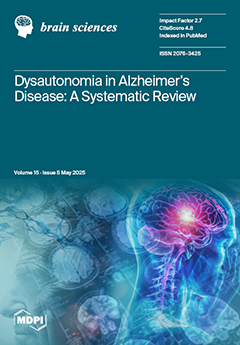Background: Idiopathic intracranial hypertension (IIH) is, by definition, of unknown cause. Davson’s equation indicates that the increased intracranial pressure (ICP) found in IIH could be due to an increase in the CSF formation rate (CSF
fr), the CSF outflow resistance (R
[...] Read more.
Background: Idiopathic intracranial hypertension (IIH) is, by definition, of unknown cause. Davson’s equation indicates that the increased intracranial pressure (ICP) found in IIH could be due to an increase in the CSF formation rate (CSF
fr), the CSF outflow resistance (R
out) or the venous sinus pressure. Studies simultaneously measuring the ICP and sagittal sinus pressures in IIH suggest that there is either a reduction in the R
out and/or the CSF
fr. The latter suggests that the increased venous pressure can be the only variable causing this disease process. A study maintaining the ICP at zero showed a significantly elevated CSF
fr in this disease. The purpose of the current study is to define the most feasible explanation for these findings and to suggest a viable pathophysiology for IIH.
Methods: A lumped parameter vascular model, originally developed to study normal pressure hydrocephalus, was extended to investigate IIH. The model used the simultaneously obtained ICP and sagittal sinus pressure measurements from five experiments published in the literature to estimate the CSF
fr and the capillary transmural pressure (TMP). The assumptions made during this study were those of a normal mean arterial pressure, a normal total R
out and a normal blood flow rate.
Results: When the CSF formation rates were plotted against the estimated capillary transmural pressures, a straight line was returned, suggesting that the CSF
fr and capillary TMP are related.
Conclusions: The novel findings of this study suggest that the CSF
fr in IIH varies with the capillary TMP. A reduced capillary TMP in IIH can moderate the ICP if there is net CSF absorption across the capillaries. This would require the blood–brain barrier (BBB) to be disrupted. The model suggests that drugs which stabilise the BBB may trigger IIH by blocking CSF absorption across the capillaries, increasing the apparent CSF formation rate back toward normal and increasing the ICP. Anaemia will promote IIH by increasing the cerebral blood flow, the capillary TMP and the CSF
fr.
Full article






